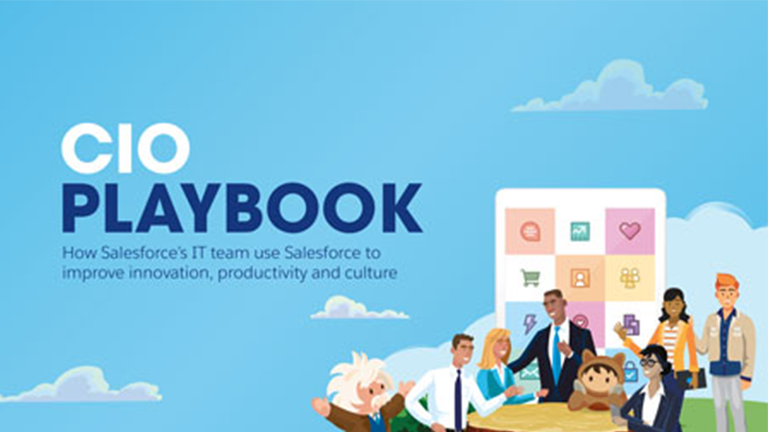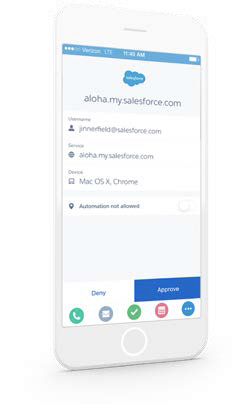As organisations innovate and adopt technologies to meet the demands of connected consumers, the CIO role is becoming more impactful. Today, 63% of organisations allow tech to be managed outside the IT department. IT is no longer tasked with simply maintaining infrastructure and responding to support tickets. It's a vital part of the employee experience.
Creating excellent customer experiences requires synergy, collaboration, and a shared understanding of the big-picture vision. IT has emerged as a leader in propelling cross-departmental teams toward those shared organisational goals. In fact, IT is so integral to our shared success that Salesforce rebranded our IT team as Business Technology. The rebranding reflects that it touches every single function each of our teams undertakes.
From sales and marketing to finance, recruitment, product development, and customer success, IT is supercharging the way we communicate and collaborate.
Employee experience drives big business benefits
Keeping employees engaged, informed, and motivated enables them to provide the exceptional customer experiences your organisation strives to create. Other tangible benefits to focusing on improving employee experience can include:
- Companies with engaged employees saw 41% less absenteeism, according to a Gallup poll.
- The typical knowledge worker spends 2.5 hours a day searching for information and could be costing the organisation over $15,000 per year in terms of time wasted searching for information.
- Companies with the highest levels of employee engagement are 22% more profitable and 21% more productive.
- 88% of business leaders in a recent Salesforce/Forbes study said an improved employee experience leads directly to improved customer experience.
A recent study by Harvard Business Review Analytic Services goes further in quantifying the positive impact of employee experience initiatives, which they found drove the following improvements:
- +70% employee engagement
- +64% employee productivity
- +62% resilience from external disruption
- +61% organisational agility
So how do you get people across the organisation all on board and pulling in the same direction?
Reimagine the employee experience with an intranet that serves them
An intranet is a restricted, private, or local communications network. It’s a great way to connect and engage employees. But only if it serves their needs and is implemented correctly. Research from 2020 shows that regular use of the company internet correlates with a company’s success, with leaders in their industry boasting the highest rates of regular use.
This is still an aspirational goal for too many organisations. In fact, researchers have found that 60% of companies don’t even have a long-term internal communication strategy.
Employees can struggle to find the relevant, up-to-date information they need in a timely way. IT can be buried in an ongoing avalanche of support tickets. Data and infrastructure from earlier systems that had been cobbled together were clunky and cumbersome.
There are solutions.
Using the Salesforce platform and Heroku, three developers created our mobile-friendly intranet Concierge app. They combined the functionality of a help desk and self-service. Each interaction began with, “How can I help you today?”
And finally, we were able to retire the old intranet in favour of this user-friendly, intuitive new system in 2015.
Today, Concierge serves over 55,000 employees; IT case volume dropped 40% even as the speed to resolve issues increased 40%.
Make meetings work for your teams
Like your intranet, meetings can go either way in an organisation. They can be a massive asset or a killer of both productivity and morale. In larger organisations, meetings can take a great deal of time and resources, so it’s important to ensure they’re serving their purpose.
Two of our engineers took on the challenge of optimising meeting time, coordination, and organisation. They created an end-to-end meeting management app called Executive Briefing. By pulling all customer information into the meeting record, it negates the need to manually input data and also enables salespeople to request meetings, track impact, and more. Additionally, Quip integration makes it easy to link a doc to the meeting record.
Eliminating their logistical headaches, helping them feel prepared for each meeting, and giving employees a holistic view of their customer creates a first-class experience for that team member. They are technologically empowered to do their best work.
It’s another example of how IT is connecting the dots between employee pain points and innovative digital solutions.
Gain leverage with small wins
Winning buy-in for such wide-ranging employee initiatives can be challenging. IT must have a seat at the table in every department’s strategic planning meetings. Then IT will be aware of potential problems and be in a position to bring creative, collaborative solutions.
Teams need to understand they have an incredibly valuable asset in IT. They are not fixers after the fact, but disruptors and drivers of change to benefit the entire business.
Start small and focus on getting a few quick wins that are already supported by those whose trust you’re looking to gain. Stretch your wings next time and bring a bigger initiative to the table. Know who your champions are in each departmental or cross-departmental team and keep them close.
Today, 77% of IT leaders say that IT functions as an extension of business units, not a separate function.
Learn more about building and nurturing collaboration and communication with IT in our CIO Playbook.








